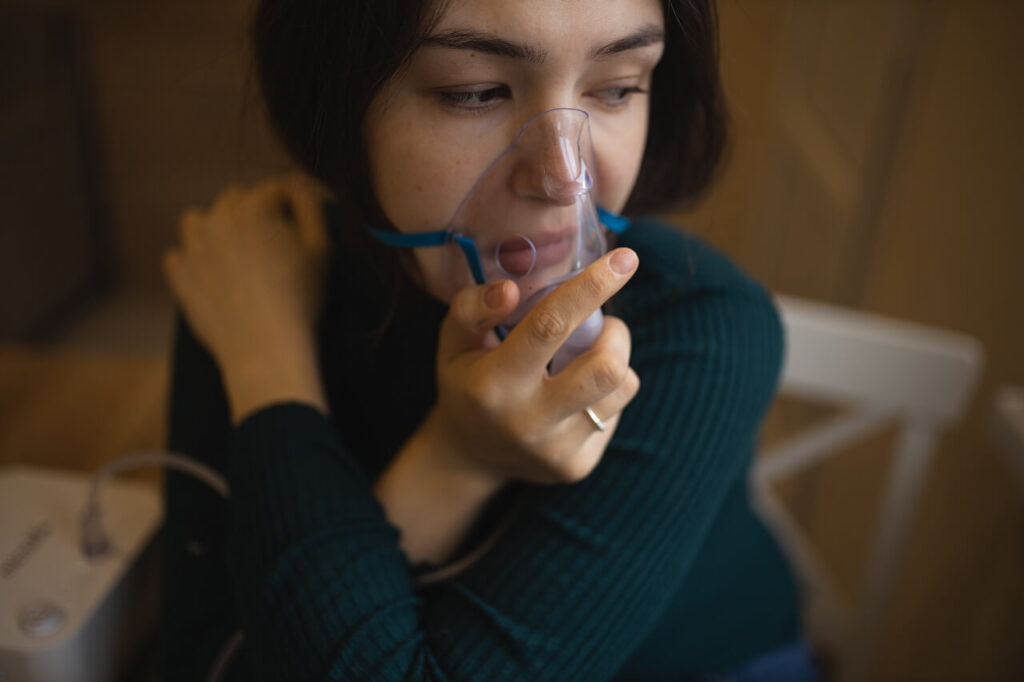A dangerous respiratory infection that occurs more frequently in winter is called Pneumonia. It may impact one lung or both. Moreover, bacteria or viruses are the leading causes of many pneumonia cases. Pneumonia symptoms can vary from so mild you barely notice them to so severe that hospitalization is required. How your body responds to Pneumonia, and how can you prevent Pneumonia in the winter season?
What is Pneumonia?
You may develop Pneumonia following an illness like the flu, bronchitis, or the common cold. Infants, children, seniors, smokers, and older people are most at risk for Pneumonia. The air sacs may swell with fluid or pus (purulent material), which can lead to a cough. Furthermore, Pneumonia can be brought on by several distinct species, including bacteria, viruses, and fungi.
The severity of Pneumonia can range from minor to life-threatening. The most vulnerable groups include newborns and young children, adults over 65, and those with health conditions or weaker immune responses.
The bronchioles and alveoli become inflamed and clogged with extra mucus or pus due to Pneumonia. Moreover, your body may cough as a reaction and aid in the fluid clearing. When you cough, your mucus (fluid) may seem green or dark yellow.
- You can experience breathing difficulties due to the extra mucus.
- The infection and inflammation could bring on a fever.

Pneumonia Causes
Your lungs’ primary jobs are to release carbon dioxide and add oxygen to your bloodstream. Breathing happens 12 to 20 times every minute when you are healthy. Your voice box, the back of your throat, and your windpipe move air while you breathe (trachea). Your trachea has two airways (bronchial tubes).
The left lung is reached by one bronchial tube, whereas the right lung is called by the other. For the lungs to function at their best, the airways must stay open while you breathe in and out. Swelling (inflammation) or mucus may make breathing harder because it can obstruct the airways’ capacity to move. It causes breathing problems.
What makes me more susceptible to Pneumonia?
- The flu or a cold
- Conditions of health like heart or lung disease
- A compromised immune system resulting from steroid usage, cancer, or HIV
- Recently being hospitalized
- Smoking
- Abuse of alcohol
- Kids or Old people
Pneumonia Symptoms
What pneumonia symptoms and indicators are there? Pneumonia symptoms and signs might include:
- Cold or fever
- Cough
- Breathing quickly or with shortness of breath
- When you cough or breathe deeply, your chest hurts
- Headache
- Vomiting
- Confusion or shifts in consciousness (in adults aged 65 and older)
- Fatigue
- Infants and newborns may not exhibit any symptoms of the infection.

Pneumonia differential diagnosis
You can detect the Symptoms of an infection or the bacteria causing your Pneumonia in blood testing.
A chest x-rays
An X-ray aids your doctor in searching for indications of chest inflammation. Your doctor can learn more about the location and severity of any inflammation from the X-ray if it is present.
Blood testing
This test confirms an infection using a blood sample. Additionally, culture can aid in determining what might be the root of your ailment.
Pneumonia culture
A sample of mucus is taken during a sputum culture after you have coughed vigorously. It is subsequently delivered to a lab for analysis to determine the infection’s origin.
A pulse oximeter
The amount and oxygen level in your blood is measured with pulse oximetry. If a sensor is attached to one of your fingertips, it can tell you whether your bloodstream is receiving enough oxygen from your lungs.

How can I control my symptoms?
As needed, take a nap. Every few hours take a break—alternate periods of activity and rest. Take liquids as prescribed. Find out how much fluid you should consume, and which syrups are best for you.
You may be able to cough up your mucus more quickly if you drink something to thin it down.
Avoid smoking
You run a higher risk of Pneumonia symptoms if you smoke. Additionally, smoking makes it more difficult for you to recover from Pneumonia. If you require assistance quitting smoking, seek information from your healthcare professional. Do not smoke around others.
When to visit a doctor?
If you experience breathing difficulties, chest pain, a prolonged temperature of 102 F (39 C) or higher, or a chronic cough, particularly one that produces pus, see a doctor.
Those who fall into these high-risk categories must visit a doctor:
- Adults who are above 65
- Children under the age of two who exhibit specific symptoms
- individuals with underlying illnesses or compromised immune systems
- those undergoing chemotherapy or taking immunosuppressive drugs
- Pneumonia can swiftly become a life-threatening condition for some older adults, people with heart failure, and those with chronic lung conditions.
Keep your lungs healthy
Pneumonia is curable, and you can prevent it ahead of time with the suggested precautions. Moreover, you can get professional help from Call Doctor for improved health and fitness.





very Informative! I got to know about Pneumonia.